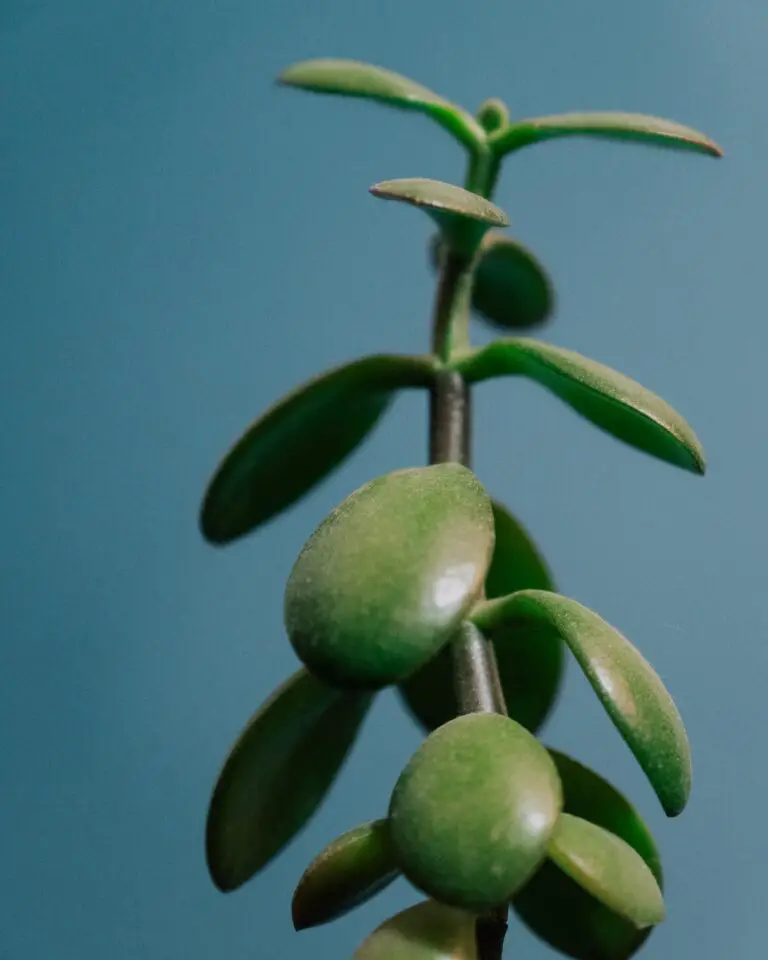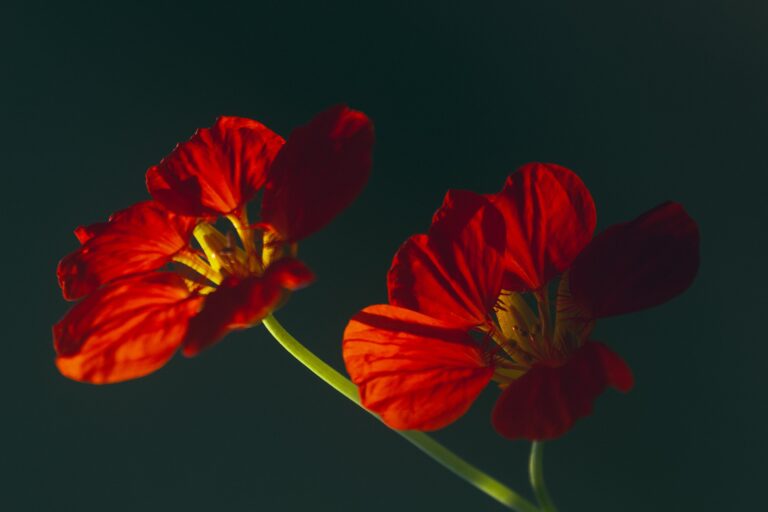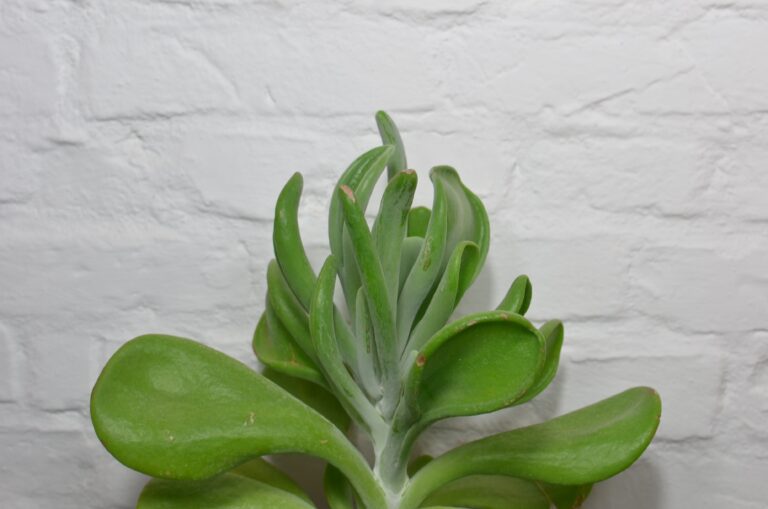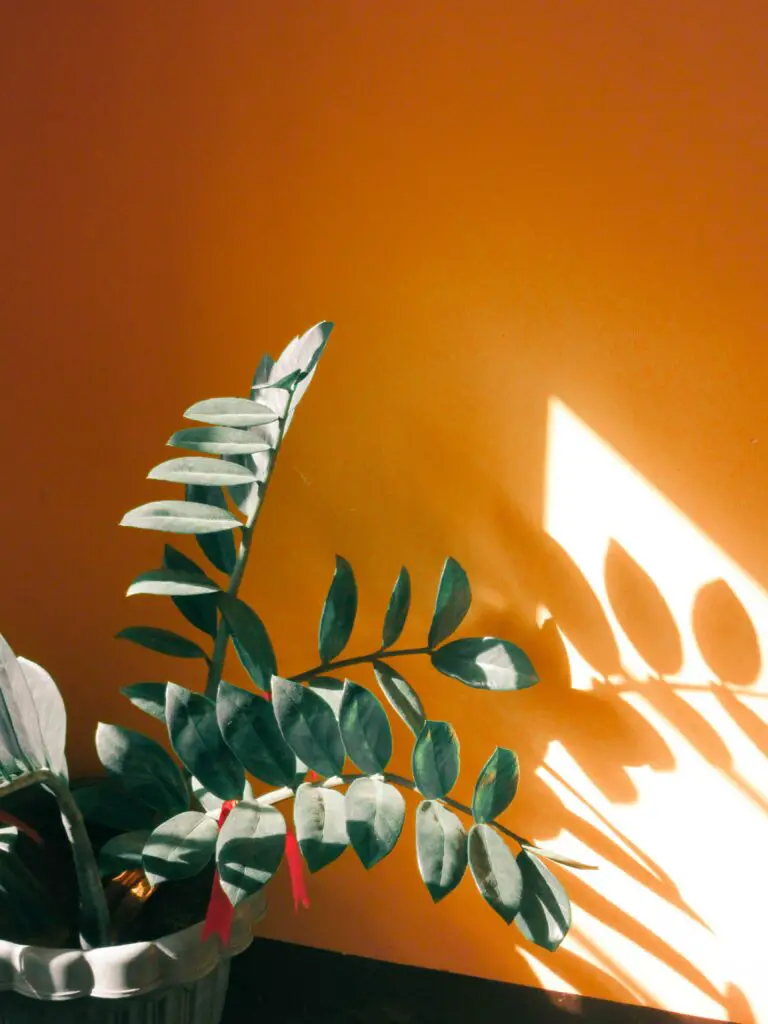Introduction to Crassula and Sunlight
Imagine a Crassula: plump, green, and utterly at peace. Now, hold that thought, because sunlight is to Crassula what spinach is to Popeye—it’s the secret sauce to vigor and beauty. The relationship between Crassula species and sunlight is not just fundamental; it’s transformational, affecting everything from their lush coloration to their robust growth.
A Crassula basking in the right amount of sunshine is a sight to behold, radiating health from every pore—well, in the plant’s case, every leaf. Sunlight triggers the magic of photosynthesis, the very wizardry that turns light into chemical energy, allowing these succulents to flourish. Without adequate sun, Crassula plants may as well be operating at half-battery, capable of surviving but not thriving.
Consider Jane’s Crassula, perched on her office sill, soaking up the sun’s rays like a cat in a patch of warmth. This isn’t just plant care; it’s a ritual, ensuring that her leafy friend absorbs enough light to maintain its statuesque pose and jade-green hue. After all, sunlight isn’t just a nice-to-have—it’s a gotta-have for Crassula to stay on top of their plant game.
But how much sun is too much, and what happens when these sun-kissed beauties get a little too much bronze on their leaves? Here’s where the art and science of Crassula sun-care come together—striking that perfect balance of light to keep them tip-top without tipping into sunburn.
To truly grasp the Crassula’s need for that golden glow, we must dive into their sun-drenched world, exploring how sunlight becomes the elixir of life for these hardy yet stunning plants. And, as we peel back the layers of their love affair with the sun, we’ll uncover the quintessential tips that every Crassula enthusiast needs to know—we’re shining a light on the best-kept secrets of sunlight for Crassula health and growth in the next sections.
Understanding Crassula’s Natural Habitat
Let’s talk about where our green friend, the Crassula, feels right at home—under the generous embrace of the sun’s rays. Nestled in the arid regions of South Africa and Madagascar, Crassula species have mastered the art of soaking up the sun. Much like a sunbather lounging on the golden sands of Cape Town, these succulents bask in the glory of bright, direct sunlight with unbridled joy.
Imagine the vibrant scenes of their natural habitat: rocky outcrops and dry plains where the sun reigns supreme. These hardy plants are no strangers to the scorching sun overhead, and it’s this very sunlight that fuels their lush, jade-hued leaves, enabling them not only to survive but to thrive. In their sun-drenched worlds, Crassulas exemplify resilience, becoming symbols of endurance and beauty in harsh climates.
Curious about how to translate Crassula’s love for sunlight into your indoor garden? It’s all about replicating those natural, sunny vibes. Give them a spot where they can catch a few golden hours each day, much like they would in the dry regions of their origin. It’s their version of a mini-vacation, right in your living room!
And if you’re eager to dive deeper into the world of succulents and perfecting that radiant glow for your plants, don’t miss our guide on care tips for radiant succulents. It’s your one-stop-shop for turning your home into a mini-oasis for these solar-loving beauties!
For a glimpse into the real deal, have a look at this stunning snapshot of a Crassula in its element, perfectly capturing the essence of its sun-baked origins. And remember, when it comes to Crassula and the sun, it’s a love affair that’s truly stood the test of time.

Decoding Crassula’s Sunlight Requirements
Unravel the mystery of Crassula’s sunlight needs and discover the sweet spot for flourishing foliage. Imagine Crassulas as solar-powered botanical buddies; their chubby leaves are like little green batteries, soaking up rays for robust growth. But what’s the ideal dose of sunshine?
The golden rule is: bask in the sun, but don’t fry. Direct morning light sprinkles the perfect amount of pixie dust, while the fierce midday sun might push them over the edge. Your Crassula yearns for that sweet spot—about 4 to 6 hours of sunbathing daily—with dappled afternoon shade as their cozy haven.

In the real world, think of the Crassulas perched in a sun-kissed kitchen or lounging under a skylight, their succulent silhouettes casting playful shadows. Too little sun, and they get leggy, like saplings stretching for a light that’s always out of reach. A well-positioned Crassula, however, stands stout, a testament to the power of proper lighting.
It’s not just about quantity—it’s about quality. Intensity matters. A gentler gleam in cooler climates can be just as effective as the potent noon blaze of warmer regions. In essence, it’s a balancing act that the Crassula masters with poise, capturing light in its emerald embrace.
For more insights on tending to succulents and understanding their world, check out this deeper dive into the art of succulent care, revealing yet another facet of nature’s ingenuity.
Illuminate your Crassula’s life the right way, and watch as it grows with boundless vitality, reveling in the dappled dance of light and life.
The Science of Sunlight: Photosynthesis in Crassula
Ever wondered how Crassula plants can just sit there, basking in the glow of the sun, and manage to look plump and happy all the time? It’s all thanks to the magic of photosynthesis – the art of making food using sunlight! And for a Crassula, it’s like their own personal solar panel system. Let’s dive into this fascinating process and unveil how these succulents harness the power of the sun.
Photosynthesis in Crassula plants is like a gourmet chef cooking a five-star meal; they need certain ingredients – sunlight, water, and carbon dioxide, and a special kitchen – the chlorophyll in their leaves. Delving into the different varieties of Crassula, you’ll notice the green pigmentation, indicative of this integral chlorophyll. When these elements meet, it’s showtime! Energy from sunlight kickstarts a chemical reaction that transforms water and carbon dioxide into glucose – the plant’s delicious homecooked meal, and oxygen as a byproduct.
Now, let’s get real for a hot second. Imagine your Crassula is like a solar-powered superhero. Its thick, waxy leaves, a built-in defense against dehydration, capture sunlight efficiently. No cloudy day blues for these guys – they have a knack for making the best out of every ray that comes their way! Not to mention, they’re pretty low-key about it. And we’re not just pumping out oxygen; we’re talking about releasing moisture too, creating a mini-oasis that benefits the surrounding environment. Talk about a win-win, right?
But hold up! It’s not just any light that gets the Crassula’s juices flowing. The ideal radiance comes from soaking up that full, direct sunlight. Although they can tolerate a bit of shade, these succulent pals are sunshine lovers at heart. They flourish under the sun’s embrace and thrive when they get that golden touch for a good part of the day. Trust us, give them the light they love, and they’ll reward you with growth that’s just as sunny!

But life isn’t always a beach, and sometimes too much of a good thing can be a little…burning. You see, while Crassula plants crave the sun, they don’t fancy getting scorched. Just like us slapping on that SPF, these fleshy friends prefer a little sun-protection during the hottest parts of the day. So, a spot with morning sunlight followed by dappled afternoon shade? That’s the golden ticket!
In essence, our Crassula comrades are sun-worshipping experts, utilizing every sunbeam to concoct their sweet sustenance. It’s a clever system, and it’s what gives them the chutzpah to be such resilient and carefree plants – perfect for those of us without a green thumb. And if you’re in need of a little greenery in your life, light up a Crassula’s world, and they’ll surely brighten up yours too!
Indoor Care: Sunlight Solutions for Crassula
As any seasoned gardener will tell you, light is a pivotal ingredient in the recipe for healthy houseplants. The Crassula, with its plump, glossy leaves, particularly revels in the glow of the sun. But indoors, achieving the perfect light conditions is akin to finding the sweet spot in a hammock – it takes a little wriggling around. Let’s turn up the brightness on this subject and not leave your Crassula in the dark!
First off, window placement can truly make or break your Crassula’s day. South-facing windows are like the VIP lounge for these succulent pals, basking them in bright, indirect light for most of the day. If you’re in the northern hemisphere, that is. If a south window isn’t an option, don’t fret! East or west-facing windows are also beneficial, with morning and afternoon sun providing a milder soak of rays—like a gentle wake-up call or a warm evening hug for your Crassula.
The plot thickens when winter casts a shadow over the sunlight hours. During these gloomy times, your green friend may start to stretch out, reaching for any distant light—this botanical ballet is called etiolation. When you spot this, it’s like your Crassula is holding up a sign that says, ‘I need more sun, please!’. That’s when artificial grow lights can save the day. These sun mimics are the superheroes for the sun-deprived Crassula, ensuring it gets its daily dose of vitamin D, even when the skies are grey.
Imagine you’ve found the perfect corner for your Crassula, but there’s a catch – it’s too shady. Cue the grow lights! They’re not just functional; they can also be stylish. With sleek designs and different hues, you can customize your indoor garden vibe while still catering to the needs of your chlorophyll-filled chums. For a real-life example, think about creating a spotlight effect over your Crassula, turning it into the star of your living room stage while it performs its photosynthesis magic.
Let’s dive into a visual how-to with this informative video on creating the ideal indoor sunshine for your Crassula, featuring practical tips that will help even the beginner gardener turn their home into a plant paradise. Watch, learn, and let your Crassula soak up that sweet indoor sun!
By integrating these sun solutions into your indoor care routine, you’re not just giving your Crassula a better chance at thriving, you’re also setting the stage for growth bursts that can lead to blooming success. A little sun shuffle might be all it takes to keep your Crassula standing tall and basking in the glory of your green thumb efforts. So go ahead, let the sunshine in, and watch as your Crassula reaches new heights of indoor plant vitality!
Protecting Crassula from Too Much Sun
While the Crassula family basks gloriously under the sun’s nurturing gaze, too much of this good thing can lead to a solar snafu. You’ve seen it before—a sunburned succulent, its leaves a telltale crisp at the tips. Heat stress is no joke, and for Crassula, affectionately known as the “money plant,” the key to wealth lies in moderation, especially when it comes to sunshine.
Imagine this: your beloved Crassula, perched on the sill, once vibrant and green, now tinged with the brown of overcooked edges. To prevent your green amigos from becoming sunstruck victims, consider positioning them in a spot that catches gentle morning sun, while shielding them from the harsher afternoon blaze. A sheer curtain can act as a perfect sun filter, offering protection while still letting through that life-affirming light. It’s like slapping on a pair of sunglasses on your Crassula—style and safety in one!

Diligence is your best defense against the crispy fate of overexposure. Keep an eye on those succulents during heat waves or peak sun hours. If you notice signs of sunburn—like patches of white or brown, or leaves that feel papery and dry—it’s time to shuffle your Crassula to a shadier rendezvous point. Rotate your plants regularly to make sure each side gets its fair share of light without getting scorched. And if your green companion lives outside, consider a canopy or umbrella to cast a protective shadow during the sun’s zenith.
Remember, your Crassula isn’t trying to work on its tan; it’s all about the quality of light, not just the quantity. With a bit of thoughtful placement and care, you can ensure your sun-kissed treasures remain just that—kissed, but not burnt, by the sun’s fiery affections.
Seasonal Sunlight Adjustments for Crassula
Ever noticed how the sun plays hide and seek as the seasons change? Well, your Crassula is definitely taking notes! As a succulent aficionado, it’s crucial to understand how Crassula’s need for sunshine can indeed shift from summer barbecues to winter carols. Just like you swap your bikini for a cozy sweater, Crassula requires some tweaks in its care routine to thrive throughout the year.
Sunbathing in Summer: Crassula’s Love for Long Days
When the sun’s out for the long haul, Crassula basks in the extended daylight hours, soaking up every ray it can get. Think of it as their version of hitting the beach. But here’s the scoop: too much of a good thing can lead to sunburn (yes, plants get it too!), especially when the sun is at its peak. If you notice your Crassula’s leaves turning crimson as if it got a tan, it might be time to provide some afternoon shade. Real-life succulent guardians have found that a simple sheer curtain or moving the plant a few feet away from the window can work wonders.
Short and Sweet: Fathoming the Winter Sun
Once winter waltzes in, the sun takes a bit of a breather, and so does your Crassula. The reduced light levels might make you ponder over your plant’s well-being. Keep calm and carry on caring; they are built for this—a period of dormancy where their growth hits the snooze button. Here, you can cut back on watering and let them enjoy the cool winter light. Watch them closely, though—repositioning to catch the sparse rays may help prevent etiolation, that lanky, “I need more light” look.
For those die-hard Crassula fans, let’s peek into a real gardener’s story: Emma’s Crassula used to stretch out sadly every winter, longing for more light. One year, she decided to place it in a south-facing window and, voilà! The change was like a morning coffee to the plant, giving it enough energy to stay perky till spring.
But let’s get even more hands-on with a video feature to really shine a light on how these adjustments can be a game-changer for your Crassula’s condition:
Embracing these seasonal shifts in sunlight and adjusting your Crassula care accordingly can ensure that your green buddy not only survives but thrives. Keep a watchful eye on your plant’s reactions, adjust as needed, and you’ll become a seasoned Crassula whisperer in no time!
Frequently Asked Questions
Ever wondered if your Crassula, that plucky little succulent, is soaking up enough sunshine? Let’s bring light to the most common curiosities plant enthusiasts have regarding Crassula are nevoie de soare, or as we like to say, Crassula’s sunbathing habits!
Do Crassula Plants Need Direct Sunlight?
Picture this: a mighty Crassula standing tall and proud, basking in the natural aubade of direct sunlight. Yes, your Crassula loves a good sun-soaked spot, just like a sunbather relishing the warm embrace of a beach holiday. Aim for about four to six hours of direct sun, especially in the morning, to see it thrive like a star.
Can Crassula Survive in Low Light?
Low light doesn’t have to signal the end of days for your Crassula. While it won’t pull out the party hats, this resilient succulent can endure those less sunny corners of your home with a stoic grace. Just don’t make dimness a long-term gig; otherwise, you’ll witness a less than perky Plant.
What Happens if My Crassula Gets Too Much Sun?
A sunburnt Crassula is no laughing matter—think of a tourist who forgot their sunscreen at the equator. Too much sun can lead to a faded or scalded appearance, a tell-tale sign your green pal is waving a little white flag. Rotate the plant, or introduce some shade, to dial down the heat.
How to Tell If My Crassula is Getting Adequate Sunlight?
When your Crassula is getting its Goldilocks dose of sunshine—not too little, not too much—it’s like watching a child grow. You’ll see firm leaves, vibrant colors, and a vitality that says, “I’m living my best plant life!” If your Crassula could high-five, it would be shooting one your way.

Best Practices for Crassula Sunlight Exposure
To wrap it up into a sunny little package, your Crassula is on Team Sunshine. Remember, direct morning light is your best bet, filtered afternoon rays are cool, and the occasional low-light escapade is manageable. Keep it golden, not burnt, and you’ll have a joyful green companion that’s just radiating with happiness.
FAQ: How Much Sun is Too Much for Crassula?
Think of a Crassula as a beach-lover who forgot to pack sunscreen—some sun is glorious, but too much? Ouch! That’s when you witness your frisky friend turning into a lobster. Similarly, Crassula plants adore the sunshine, thriving under its nurturing rays, but just like our beach enthusiast, there’s a fine line before it becomes too much.
It’s a sunny day, you’re basking in the warmth, life is good—until you notice your Crassula starting to throw shade by sporting a sunburn. That’s right, plants get sunburned too! The signs are telltale: leaves may start to look bleached or sport crispy edges. They may even begin to develop a dull, flat color instead of their vibrant green. It’s their way of saying, “Hey, I’ve had my fill of Vitamin D for today!”
Spotting the Sun-Scorched Symptoms
Imagine taking your Crassula out for a sunbathe, only to find that its once lush leaves are now looking like they’ve crisped under a chef’s blowtorch—yikes! You’ll know your Crassula has had a touch too much sun when the leaves start changing. Instead of plump and juicy, they feel dehydrated and resemble overcooked veggies. The leaves may get soft, saggy, or wither away as if pleading for an umbrella or some shade.
But don’t fret! Just like applying aloe vera to sunburnt skin, there are ways to soothe your sun-stressed Crassula. First, consider a location change—somewhere with bright, indirect sunlight is like a five-star resort for these guys. These plants enjoy light, but they don’t want to live on the sun. Think of moving them to a spot where they can sip on light, rather like a morning coffee routine—gentle and refreshing.
Shade-Savvy Solutions for Sun Weary Crassulas
It’s all about that perfect spot! Not too dark, not too bright, just right. When your Crassula’s leaves start showing that familiar tinge of “I’m done,” it’s time to play musical chairs with your pots. Find a spot that mimics the dappled sunlight of a tree canopy, or consider a sheer curtain to filter the intensity. The goal is to provide a gentle reprieve from the harsh midday sun while still keeping your Crassula in the metaphorical beach lounge chair—soaked in light yet protected.
Your Crassula’s sunbathing days don’t have to end in a sunburn disaster. Keep a watchful eye for the warning signs and be ready to offer shade to your solar-powered pal. With these protective measures, your Crassula will flaunt its jade-green leaves proudly, staying cool and collected under the sun’s enthusiastic embrace.
{embed_video_here}
FAQ: Can Crassula Grow in Indirect Sunlight?
As plant enthusiasts, we often ponder whether our green friends can thrive outside their ideal conditions. Let’s delve into the intriguing possibility of nurturing a Crassula plant away from the sun-soaked windowsill. Does it dream of basking in the dappled light, or could it, perhaps, flourish in the gentle embrace of indirect sun?

Imagine a cozy corner of your home, where the direct rays of the sun are but a distant memory. It’s here that some would argue that a Crassula could enter a state of peaceful coexistence. Under these lower light conditions, our succulent friend may not attain its full sun-kissed potential, but that doesn’t mean it won’t grow. Indeed, with the right care, a Crassula can adapt to an existence far from the blazing sun.
Real-life examples abound of Crassula plants that have settled into life in softer, filtered light—thriving despite what the textbooks may say. This resilient plant can surprise you with its tolerance and adaptability. However, be prepared for a slower growth rate and potentially lighter, less vibrant foliage when the sun is playing hide and seek.
It’s a balancing act, though. Too little light, and your Crassula might stretch out, reaching for a sunbeam that never arrives. This etiolating, or stretching, is the plant’s way of saying, “I need more light!” On the other hand, an indirect sunny spot can be just the ticket for a Crassula that enjoys a quieter life, away from the limelight.
Let’s be analytical: Growing a Crassula in indirect sunlight is indeed viable. It’s all about managing expectations and understanding that, while the plant will grow, it will do so in its own sweet time and manner. With attentive care, your Crassula can live a happy life in the softer glow of indirect light—proof that even in the plant world, there’s room for flexibility and surprise.
FAQ: What Are the Consequences of Insufficient Sunlight?
So, you’ve got a Crassula and you’re hoping for a robust, jade cascade of leaves, right? Well, sunshine is your best buddy here! Imagine trying to charge your phone with a candle—it’s just not going to cut it. Same goes for our plucky Crassula; if we skimp on sunlight, the consequences can range from “meh” to a downright “plant tantrum.”
First off, let’s talk growth—or in this case, the lack thereof. A Crassula thirsting for sunlight is like a superhero without a cape; it just doesn’t fly. The plant will become leggy, stretching out its stems in a desperate reach for light, leaving you with a spindly, sad looking specimen. This starved-for-sun stretching is known in the plant world as etiolation, and it’s the botanical equivalent of a cry for help.
Next up on the drama list is color. Crassulas are like chameleons; they change their look based on their environment. Without enough rays, those gorgeous green leaves can fade faster than a one-hit-wonder’s fame. The vibrant greens may start to look as washed out as last year’s jeans, and the red-hued tips that Crassulas are known for? Kiss them goodbye—they’ll fade like a sunset on a cloudy day.
Let’s not overlook the ultimate party trick of any robust Crassula: flowering. These stoic succulents surprise us with blooms when they’re truly happy—or just when they feel like it. But without sufficient sunlight, a flower is just a figment of our imagination. It’s like expecting a firework show but realizing you only have a pack of wet matches.
But how do you know your Crassula is throwing a shade-induced sulk? Keep an eye out for signs: Leaves that drop quicker than mic drops at a rap battle, or leaves that have gone from plump and perky to thin and wrinkled, like they’ve been on a laundry spree without the joy of ironing.
Real-Life Snapshot: A Sun-Deprived Crassula Case
Consider the tale of Sarah and her once-thriving Crassula. Upon moving to an apartment with fewer windows, Sarah noticed her vibrant jade plant losing its luster. The stems became long and floppy, like spaghetti noodles left out too long. Leaves began to drop with the slightest touch—a telltale sign of a light-starved succulent. No more were the days of admiring its verdant foliage or catching the occasional glimpse of a flower cluster. It was a classic case of insufficient sunlight, and Sarah had to act fast to bring her Crassula back from the brink. By finding it a brighter spot and monitoring its response, she slowly witnessed a return to glory—an inspiring comeback story for flora fans everywhere!
If you’re visual like me and need to see to believe, check out this video which gives us a peek into the sun-lit life our Crassulas should be living:
FAQ: How Do I Adjust Sunlight Exposure for Crassula in Winter?
When the chill of winter embraces the earth, the dance of sunlight pirouettes differently across our homes. For a sun-loving Crassula, this seasonal tango presents a unique challenge. How do we ensure our resilient green friend continues to bask in sufficient daylight when the sun is playing hard to get? Here’s your go-to guide for optimizing Crassula’s sunshine needs during the wintry months.

Firstly, it’s paramount to recognize that while Crassula plants are robust, they still long for their solar caffeine to perk up through the day. Despite reduced hours of daylight, we aim to capture every precious ray. Start by relocating your Crassula to a well-lit spot, preferably close to a south-facing window where the sun’s cameo is at its strongest.
But beware, not all sunny spots are created equal in winter’s realm. The low-hanging sun can sometimes introduce a too-intense spot that may lead to a sunburned Crassula. It’s akin to accidentally dozing off in the noontime sun at the beach—a quick toast and you’re a shade too burnt! Keep a vigilant eye on the leaves; any sign of crimson is your cue to move the plant slightly away from the window.
For those cloudy days, when the sun seems to have taken a sabbatical, consider artificial grow lights as a stand-in for the sun’s encore. With a timer to mimic natural light cycles, your Crassula will hardly notice the difference. It’s like bringing the sun indoors, tricking the plant into thinking it’s balmy July when it’s actually frosty January!
Don’t forget to turn your Crassula regularly. Just as a cat finds ever-evolving sunny spots to lounge in, rotating the plant ensures all sides receive equal light exposure. This avoids lopsided growth, keeping your Crassula in harmonious symmetry, thriving as if it’s perpetually dining under the summer sun.
Adapting to the winter light doesn’t require a green thumb so much as a mindful observation. Like monitoring a tea’s steeping to achieve that perfect brew, adjusting your Crassula’s place in the sun will keep it vibrant and cheerful, as if every day is the longest day of summer. Embrace the cold season’s challenge and witness your Crassula glow with gratitude for your attentive care.



